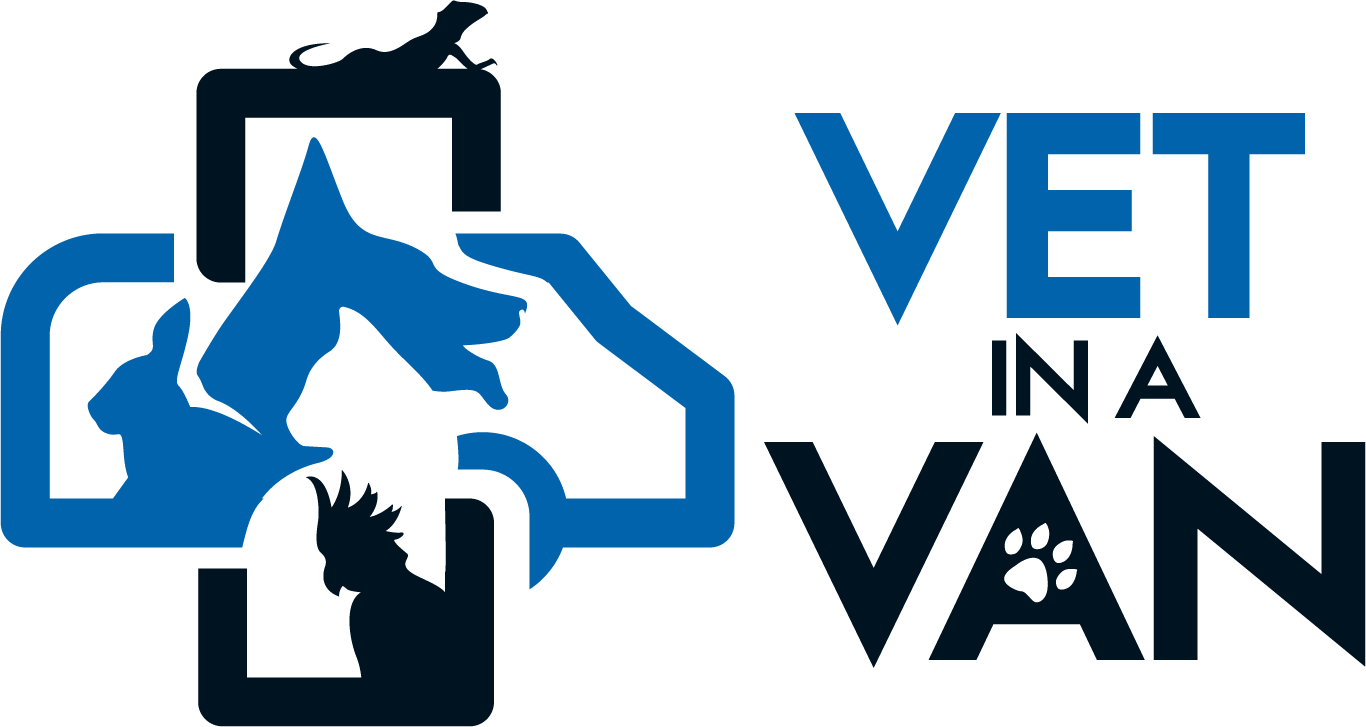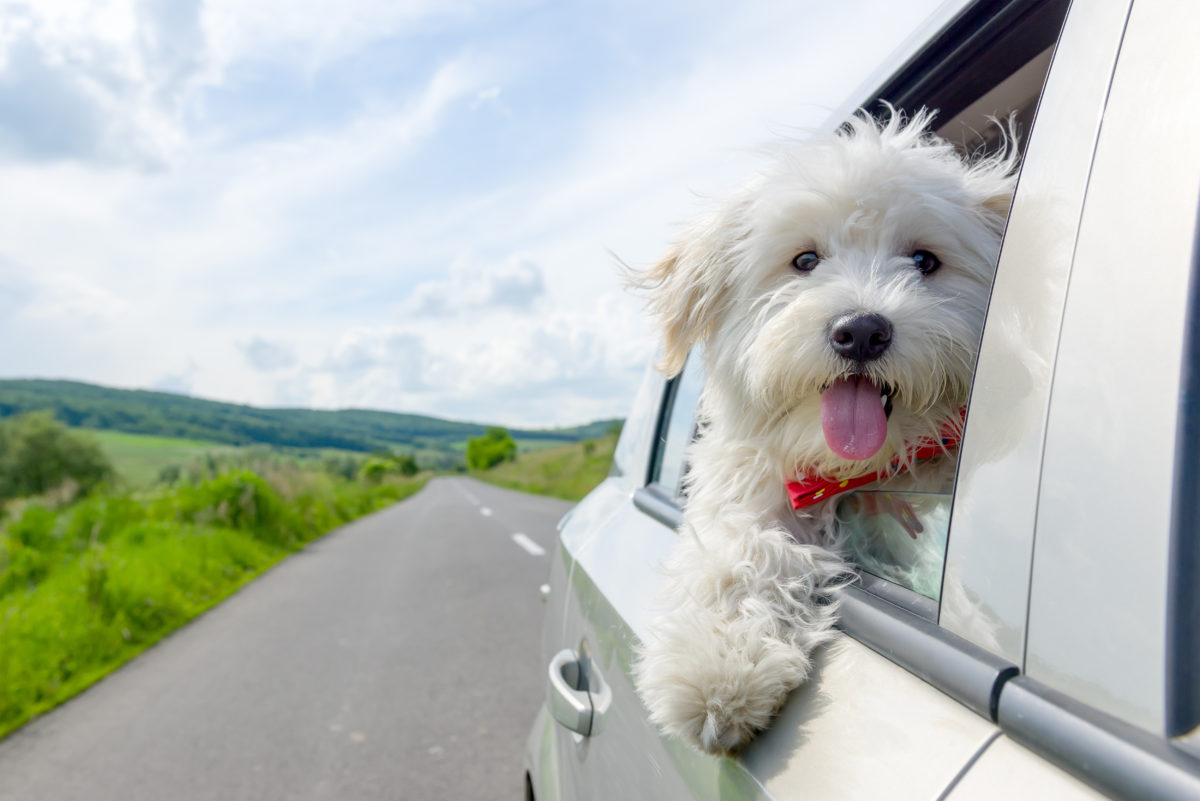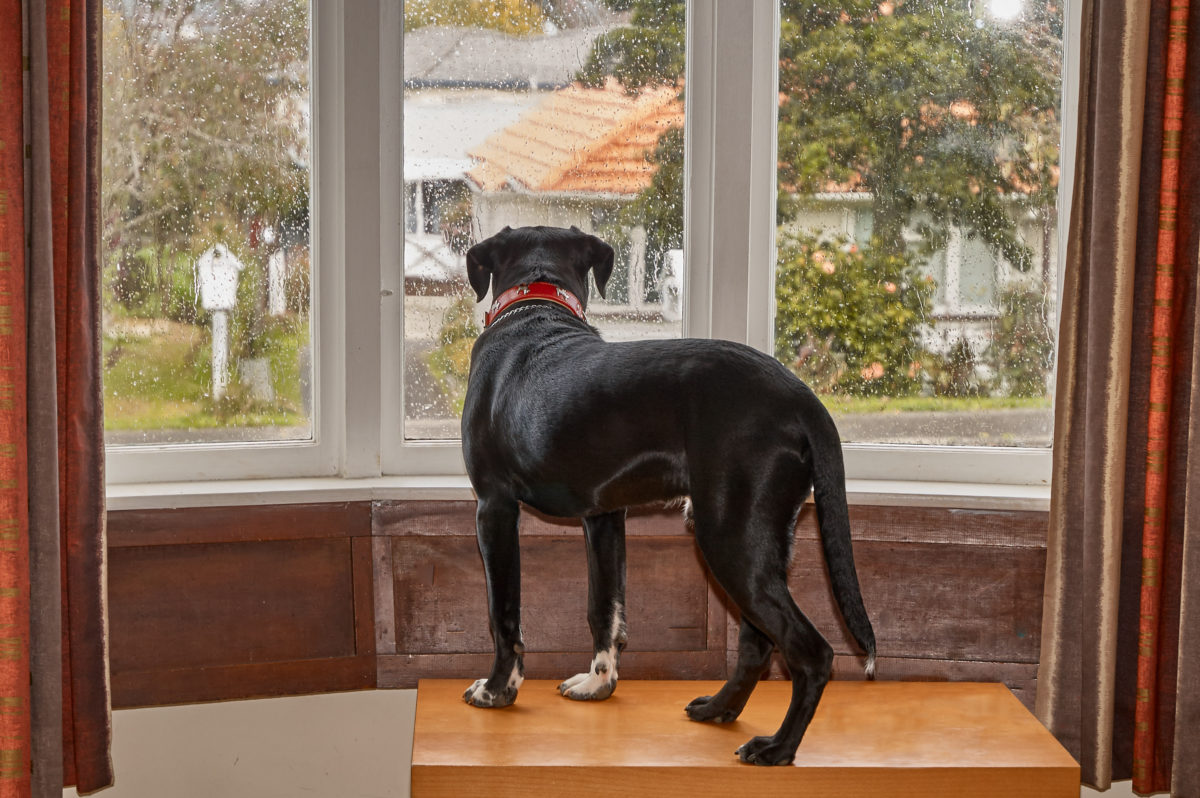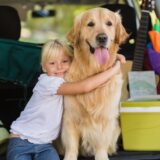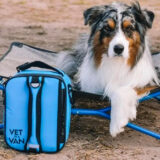Some dogs happily jump into the car, sit quietly, are relaxed and enjoy the ride or snooze the kilometres away. Others aren’t so keen. So, whether you’re just needing to take a quick trip to the park or would like your dog to feel safe on a longer car journey, there are a few things to consider before heading off.
If you are planning a big driving trip or holiday then give yourself, and your dog, plenty of time to work on a solution prior to your planned departure date.
If you have a new puppy, be sure to include car travel as part of the many types of socialisation and situations that they regularly experience between 8 and 14 weeks of age. If your puppy seems travel sick, seek veterinary advice to support them and ensure that car rides remain as a positive experience. This will help them to enjoy car travel as they grow up.
How do I know if my dog doesn’t like car rides?
There are many varied signs that your dog may not be enjoying car journeys, which may include:
- reluctance to jump into the car
- yawning
- lip licking
- drooling
- panting
- vocalising (whimpering, barking or howling)
- hyperactive or ‘crazy’ behaviour
- hiding
- trying to escape
- inappropriately toileting
- destructive behaviour (chewing, biting, digging)
- vomiting or diarrhoea, during or after the car trip
Why doesn’t my dog like travelling in the car?
The two main reasons why dogs don’t like being in a car are true motion sickness and anxiety. Other reasons for reluctance to get into the car include painful conditions like arthritis meaning that your dog won’t want to jump up or climb as it hurts. Knowing how to approach the situation and treat your dog is dependent on knowing the underlying cause.
What can I do to help my dog?
If your dog is showing any of the above signs when you try to take them in the car, then a consultation with your veterinarian is the first step. Your vet can help to assess whether illness or pain may be contributing to the problem as well as differentiating between motion sickness and anxiety. They can then make suggestions for behavioural training and/or medication based on your individual dog.
Puppies commonly suffer from true motion sickness and tend to grow out of it. Although some adult dogs may feel nauseous and drool or vomit in the car too. Providing a firm booster seat for your dog to see out the front window, ginger (in the form of a gingernut cookie or Blackmores Travel Calm Ginger tablet) or anti-nausea medication from your veterinarian prior to travel can help in these cases.
A solution will only work if it’s targeting the underlying cause so there is no magic general answer for all dogs.
After ruling out pain and illness, here’s a training approach that you may wish to try:
- Start small. With the car turned off, get your dog to sit in the car and give a reward or treat for being calm, if they seem nervous then give a command first (like ‘shake paws’ or ‘lie down’) and reward immediately for following the instruction. Repeat: get them out of the car, hop back in, command and reward. Repeat 5 times and again every couple of days, increasing the time spent in the car each time. Continue to repeat until they are showing no signs or reluctance or nervousness. Do not reward nervous behaviour and never tell your dog off or punish them – if it’s not working then remove him/her from the situation as they may need extra help to combine with this strategy (see the next section below).
- If this first step is working and your dog can repeatedly get into the car and act calmly, progress to doing the same thing then start the car. If your dog is calm, reward. If your dog shows signs of nervousness, give a command and reward. If your dog is too nervous and not responding, stop the car and return to Step 1 for a bit longer.
- Progress to small car trips. Different dogs respond differently, you may need to start just rolling the car a few metres forwards before stopping, you might get to the end of the drive way, or drive to the end of your street. Continue to praise and reward calm behaviour, distract nervous behaviour with a command and reward, or stop and return to the previous step if your dog is not coping. Once your dog is comfortable with small car trips, drive to a fun spot like the dog park to reward them.
- Once your dog is more comfortable with progressively longer trips, you can reduce rewards to every second or third time and replace them with praise, pats or cuddles.
- Great work! Dog training can be intensive and hard work but it’s well worth it and you’ll be rewarded by many happy years spent with your adoring companion.
If your pet needs a bit of extra help then some natural anxiety support may be considered:
These support items should be used in conjunction with behavioural training, as outlined above. You can try one or combine a few, whatever works for your dog.
- Bring their favourite toy, blanket or an old t-shirt that you have been wearing (so it smells like you)
- Familiarity and a bit of distraction can help calm the nerves.
- If your dog is crate trained, look at fitting their crate or a smaller travel crate into the car
- Your dog already views their crate as their safe place so this may provide them with reassurance.
- ThunderShirt
- A body wrap that provides gentle constant pressure and may stimulate calming hormones.
- Bach Rescue Remedy for Pets
- A homeopathic herbal remedy which promotes stress relief. This can be used on a random basis on days that it is needed or daily.
- Adaptil collar or spray
- A synthetic dog pheramone based on one that a mother dog releases for her puppies helping them to feel safe and secure. This can be used on a random basis on days that it is needed or daily.
- Blackmores Paw Complete Calm
- Contains nutritional supplements which may reduce stress and anxiety. A better result would be seen if used for a few days in a row or daily.
- Zylkene capsules
- A natural product derived from casein, a milk protein, which helps promote relaxation. This works best if given daily or a few days in a row. Dr Tania has personally seen good results with this product but it’s not effective in all dogs.
What if none of these things work?
Remember, some dogs will respond faster than others. If your dog is responding positively, albeit slowly or with hiccups, to natural products and training then continue. But, some dogs, usually those prone to anxiety or who have had a bad experience in the car, may need a little bit of extra help requiring prescription medication. Forcing your dog to do something that he/she is scared of or using punishment will only make the problem worse, so if they don’t seem to be improving then seek further veterinary advice.
Have a chat to your veterinarian or a specialist behavioural veterinarian about further training and/or medications which may be suitable for your individual dog. Some dogs may require further investigations, like a blood test or x-ray, to rule out medical issues or ensure that certain anti-anxiety medications are safe for them.
As with all behavioural issues, the sooner that help is started, the less of a ‘bad habit’ that the behaviour becomes and the easier it is to manage or overcome.
For extra peace of mind when out and about, make sure you have packed your Vet in a Van – Navigator Pet First Aid Kit in the car.
*None of the mentioned products are recommended or sponsored by Dr Tania or Vet in a Van, they are only listed as possible options that may help with mild travel anxiety or motion sickness. Different products will suit different dogs. Please chat to your Veterinarian if you are unsure or before giving any medication (natural, herbal or pharmaceutical) to your dog as they may interact with medications that your dog is already on or affect underlying health conditions.
